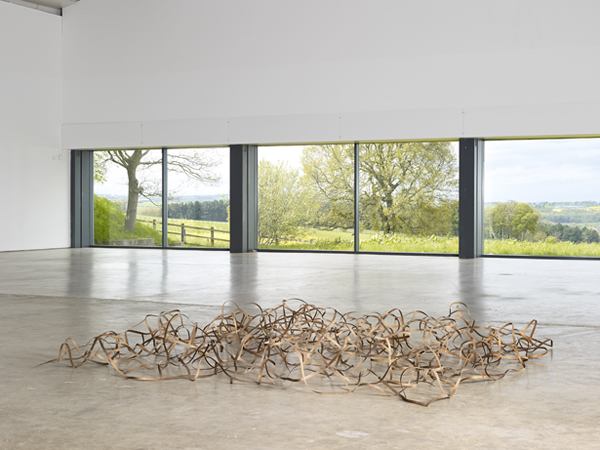Garth Evans
23 March–28 April 2013
Curated by Richard Deacon
Longside Gallery
Yorkshire Sculpture Park
West Bretton
Wakefield WF4 4LG
The Arts Council Collection presents a new exhibition of sculpture by Garth Evans, selected by his friend and former student Richard Deacon, which will open at Longside Gallery, Yorkshire Sculpture Park on 23 March 2013.
This is the first major Garth Evans exhibition in the UK in over 20 years and will feature 28 works spanning the period 1959–1982, many drawn from the Arts Council Collection. The show will reconsider Evans’ contribution to sculpture in this formative period, moving from early reliefs, to large colourful fibreglass sculptures through to entirely floor-based works. It will include a re-creation of Evans’ seminal work Breakdown (1971) which was stolen shortly after its first public viewing. Evans has recreated the work based on surviving drawings, photographs and original plans and it will be installed immediately outside the Longside Gallery.
Born in Manchester in 1934, Evans studied at the Slade School of Art (1957–60), exhibiting regularly in London from 1962 until 1991. One of Britain’s most innovative sculptors—a generation younger than Anthony Caro and coming before the New British Sculptors of the 1980s, which included Richard Deacon as well as Tony Cragg and Richard Wentworth. Evans is known for his use of geometric, asymmetrical forms and a commitment to using everyday materials such as plywood, fibreglass and polythene. Evans influenced a generation of British sculptors not just through his innovative approach to sculpture but also as a teacher at Central St Martin’s School of Art.
Turner Prize winner Richard Deacon’s selection of Evans’ work results from extensive conversations between the two sculptors and focuses on work created in the first two decades of Evans’ long and varied career. The show will bring together the Arts Council Collection’s significant holdings of Evans’ work, alongside key loans from major UK collections including the British Museum, Leeds Museums and Galleries and Tate as well as a selection of key pieces from the artist’s studio. It will feature many sculptures that have not been seen in public since they were first exhibited in the 1960s and 70s.
Influenced early on by American Abstract Expressionism in painting, one of Evans’ central preoccupations was how to create sculptural forms that carried no reference to the world. Pieces such as Untitled No. 37 (1967) will show how Evans investigated this, working with the then new, versatile and lightweight medium of fibreglass, to depart from the sculptural traditions in bronze inherited from Henry Moore and Barbara Hepworth.
Evans’ ‘carpet’ pieces of the 1970s will also be exhibited, and will demonstrate his testing of a variety of materials including polythene, which he used to form a tactile sculptural membrane in St Mary’s No 1 (1978). Later pieces such as Wedge II (1979), made from the salvaged debris from a collapsed shed outside Evans’ studio, demonstrate the radical departure the artist instigated in British sculpture in the 1970s. Evans’ achievements of the 60s and 70s were perhaps overshadowed by his almost immediate retreat from the British art scene, moving to the USA in 1979. Dramatic new directions are also apparent in the series of 41 drawings he made in the US in 1982. The Yaddo Drawings, 11 of which have been borrowed for this exhibition from the British Museum, where made during a five-week residency at the Yaddo artist colony in Saratoga Springs, New York. Exuberant and inventive, the drawings introduce a multitude of forms and ‘bodies’ that anticipate later work.


